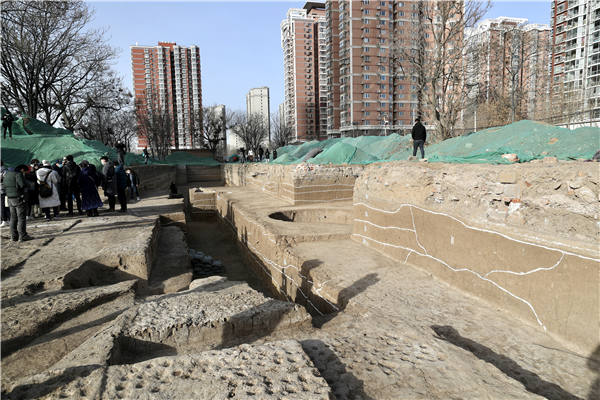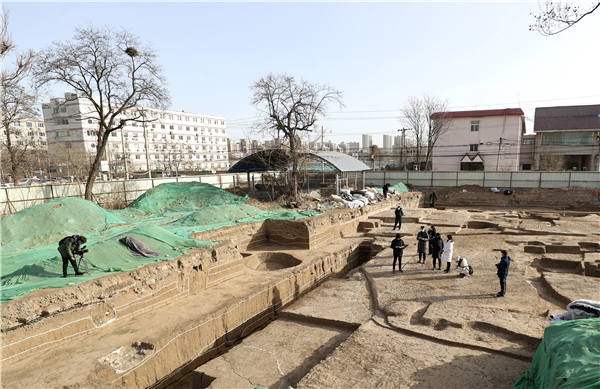Key findings unearthed on Beijing's early days as capital
 0 Comment(s)
0 Comment(s) Print
Print E-mail China Daily, January 15, 2021
E-mail China Daily, January 15, 2021

Still, Ding, the archaeologist, said that follow-up architectural studies are needed to estimate the height of the walls and their appearance.
Some findings may help fill voids in historical records, and some have verified accounts in written documents.
Historical records show that Zhongdu was expanded from an existing city from the Tang (618-907) and Liao (916-1125) dynasties. The discovery of ancient tombs from the two dynasties beneath the Jin Dynasty city wall ruins matched those records.
"In ancient China, graveyards were located outside the city," Ding said. "As Zhongdu expanded, these places were included in the urban area."
With the army of Mongol ruler Genghis Khan posing a threat to the north, the capital of the Jin Dynasty was moved from Zhongdu to Kaifeng in 1214. Zhongdu fell victim to war and was destroyed the next year. Nevertheless, when Genghis Khan's grandson Kublai Khan founded the Yuan Dynasty (1271-1368), he chose what is present-day Beijing as the capital by constructing a new city known as Dadu.
Since the Yuan Dynasty, Beijing has continued to be China's national capital with the exception of relatively short periods of decades.
"Consequently, the Zhongdu site is a milestone for our studies of Beijing's history as the capital," said Zhang Zhonghua, deputy director of the Beijing Archaeological Research Institute.
Zhang added it also has a key role in comparative studies of Chinese capital cities.
The Jurchen rulers of the Jin Dynasty made efforts to learn from the highly developed Song culture, so the design of Zhongdu mimicked Kaifeng. But given that the Song capital city was frequently flooded by the Yellow River and would be difficult to excavate, Zhongdu's ruins offer an alternative for research related to the ancient Song city in Henan province, Zhang said.
According to Fu Ran, an official in charge of cultural heritage protection with the Fengtai district government, a park featuring the ruins of Zhongdu's city walls is also planned to better protect the site and display archaeological discoveries for the public to see.







Go to Forum >>0 Comment(s)